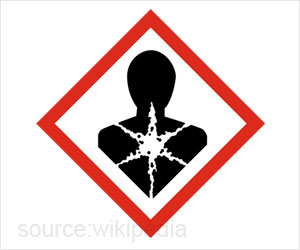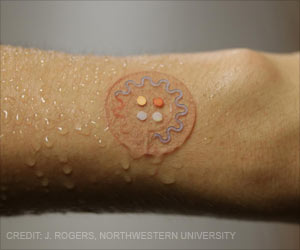Flame retardants in cars pose serious health risks, especially for drivers and children. Urgent action is needed to revise regulations and promote safer alternatives.
- Flame retardants in car interiors raise concerns for cancer, neurological disorders, and reproductive issues
- Summer heat exacerbates the release of flame retardants, increasing health risks for occupants
- Advocacy for regulatory updates and safer alternatives is crucial to protect public health
Flame Retardant Exposure in Vehicles Is Influenced by Use in Seat Foam and Temperature
Go to source). A peer-reviewed study published in Environmental Science & Technology has uncovered a troubling reality: the air inside most modern passenger vehicles contains harmful flame retardants. Led by researchers from Duke University, the study analyzed 101 cars manufactured since 2015, detecting a plethora of flame retardants present in the air and seat foam samples.
vehicle interiors can reach 150°F, intensifying flame retardant release? #publichealth #safetyfirst #medindia’
Health Implications of Flame Retardants
Flame retardants are added to car materials to meet outdated flammability standards, yet their use comes with significant health risks. Among the detected chemicals are known or suspected carcinogens, such as tris (1-chloro-isopropyl) phosphate (TCIPP), tris (1,3-dichloro-2-propyl) phosphate (TDCIPP), and tris (2-chloroethyl) phosphate (TCEP). Exposure to these flame retardants has been linked to cancer, neurological disorders, reproductive issues, and reduced IQ in children (2✔ ✔Trusted SourceDiesel Exhaust and Cancer Risk
Go to source).
Cancer Risk
Several flame retardants found in car interiors, including TCIPP and TDCIPP, are classified as known or suspected carcinogens. Prolonged exposure to these chemicals may increase the risk of developing various types of cancer, posing a significant threat to the health and well-being of vehicle occupants.
Neurological Disorders
Exposure to flame retardants has been linked to neurological disorders, including cognitive impairments and behavioral abnormalities. Studies suggest that certain flame retardants may disrupt neurological development, particularly in children, potentially leading to long-term neurobehavioral effects.
Reproductive Issues
Flame retardants have been associated with reproductive issues, including fertility problems and adverse pregnancy outcomes. Exposure to these chemicals may interfere with hormone function and reproductive processes, posing risks to both male and female reproductive health.
Reduced IQ in Children
Children, in particular, are vulnerable to the neurotoxic effects of flame retardants. Prenatal and early-life exposure to these chemicals has been linked to reduced IQ and cognitive deficits in children. The detrimental impact on neurodevelopment underscores the importance of minimizing exposure to flame retardants, especially in environments where children spend significant time, such as vehicles.
Temperature’s Influence: Summer Heat Exacerbates the Issue
Warmer temperatures exacerbate the release of flame retardants into the cabin air, as off-gassing from interior components like seat foam intensifies in higher heat. With vehicle interiors reaching temperatures of up to 150 degrees Fahrenheit, summer months pose a heightened risk of exposure to these harmful chemicals.Application of Flame Retardants in Car Interiors
Flame retardants in cars are commonly used in various interior components to meet flammability standards mandated for automotive safety.1. Seat Foam:
Flame retardants are often added to seat foam to reduce the risk of ignition in the event of a fire.
2. Upholstery:
Fabrics and materials used for upholstery may contain flame retardants to enhance fire resistance.
3. Carpeting:
Flame retardants can be present in carpets and floor coverings to prevent rapid spread of fire in case of ignition.
4. Dashboard and Panels:
Certain plastic components, such as those used in the dashboard and interior panels, may also contain flame retardants for added safety.
5. Electrical Components:
Wiring insulation and other electrical components within the car may incorporate flame retardants to reduce the risk of fire-related incidents.
Preventive Measures Against Flame Retardants in Your Car
Flame retardants in car interiors pose serious health risks, especially for frequent drivers and children. When flame retardants are lurking in your car, several preventive measures can help minimize exposure and mitigate potential health risks.1. Ventilation:
Ensure adequate ventilation by rolling down windows or using the car’s ventilation system to circulate fresh air and reduce the concentration of flame retardants in the cabin.
2. Parking in Shade:
Park your car in shaded areas whenever possible to minimize heat buildup, which can exacerbate the release of flame retardants from car materials.
3. Avoid Recirculation Mode:
When using the air conditioner, avoid recirculation mode, which can trap indoor air and increase exposure to flame retardants. Opt for fresh air intake instead.
4. Use Window Shades:
Install window shades or tinting to block out direct sunlight and reduce interior temperatures, thereby limiting the off-gassing of flame retardants.
5. Regular Cleaning:
Routinely clean and vacuum the interior of your car to remove dust and debris, which can accumulate flame retardants and other pollutants.
6. Choose Safer Materials:
When purchasing a new car or car seat, inquire about flame retardant-free options or materials with lower chemical emissions to minimize exposure.
7. Advocate for Regulatory Reform:
Support advocacy efforts calling for updates to regulatory standards governing flame retardants in car interiors to prioritize public health and safety.
By implementing these preventive measures, individuals can reduce their exposure to flame retardants in car interiors and protect themselves and their passengers from potential health hazards.
As awareness of the health risks associated with flame retardants in car interiors grows, there is an urgent need for decisive action. By updating regulatory standards and promoting the adoption of safer alternatives, we can protect drivers and passengers from the hidden dangers lurking within their vehicles. Ultimately, safeguarding public health should take precedence in the ongoing effort to create safer transportation environments.
References:
- Flame Retardant Exposure in Vehicles Is Influenced by Use in Seat Foam and Temperature - (https://pubs.acs.org/doi/full/10.1021/acs.est.3c10440)
- Diesel Exhaust and Cancer Risk - (https://www.cancer.org/cancer/risk-prevention/chemicals/diesel-exhaust-and-cancer.html)
Source-Medindia











